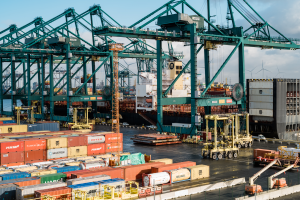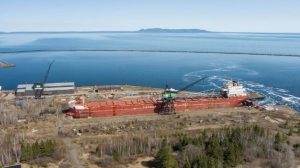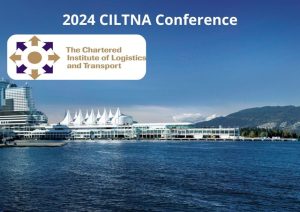*By Carl Laberge
There has never been as much attention to the importance of Canada’s supply chain than right now, with pandemic-related product shortages, geopolitical changes and severe weather events garnering public and political interest in Canada’s essential links for trade. The federal government’s Supply Chain Task Force and the House of Commons Transport and Agriculture committees are currently reviewing what Canada must do to strengthen our supply chains to ensure that our nation’s future trade enablement needs are met. ACPA’s members look forward to their recommendations.
Yet there is important work still to come, with announcements expected soon from Minister of Transport Omar Alghabra on Ports Modernization Review (PMR). Launched in 2018, this comprehensive review of the structure and operating environment of 17 Canada Port Authorities is a rare opportunity to strengthen the ability of Canada’s commercial ports to make critical investments for growth, resiliency, and global competitiveness within a low-carbon future.
Canada’s port authorities, which operate these critical federal assets as businesses at arms-length of government, are eagerly awaiting the outcome of the review, and looking to see:
• Strengthened Governance — Canada’s port authorities were established in 1998 to introduce business acumen and local management into the country’s federally owned ports, and the model has been largely a success. The federal government appoints most directors to port authority boards through a process that consults the very users of each port. Yet, there are improvements that can be made while respecting the autonomous nature of port management and the fiduciary responsibility of each board member to the local port authority they serve.
Appointment of skilled directors, reflective of the needs of the port and the diversity of the communities it serves, could be made more effective through stricter timelines for board appointments and greater attention to the skill needs and candidates identified by port user groups.
• Financial Flexibility and Borrowing Limits – Greater financial flexibility means different things for different ports. Unlike private businesses or other federal assets like airports, borrowing limits for Canada’s port authorities are outlined in their letters patent. Revising them is a lengthy process, incompatible with the needs of ports and project partners in a dynamic global trading environment. Instead of borrowing limits, port authorities recommend government establish minimum credit ratings and reasonable debt servicing metrics for each port authority, or in the very least streamline procedures for borrowing limit changes.
• Federal Funding Tools – The National Trade Corridors Fund has been tremendously helpful in strengthening Canada’s supply chains, with $880 million in investments at Canada’s port authorities. However, demand far exceeds the amount of funding available. For ports with smaller tonnage volumes, additional financial tools would be helpful, such as access to the Canadian Infrastructure Bank for smaller projects or a dedicated fund for maintenance of critical infrastructure.
• Land and Inland Ports — As with changes to borrowing limits, the buying and selling of land requires changes to letters patent, which can be complex, time-consuming, and expensive. This means ports miss opportunities to make critical investments to support port operations and capacity. Global supply changes have evolved to be more complex over time and Canada’s ports play a central role in Canadian trade. They must be able to move more nimbly.
We must also ensure ports are able to create “inland ports” — intermodal terminals directly connected to seaports by rail or road — to allow for more efficient use of land and improve traffic flows for Canadian trade.
• Subsidiaries and Joint Ventures — Another element of financial flexibility is greater flexibility around the use of subsidiaries and joint ventures, to allow Canada’s port authorities to more fully participate in business development opportunities to generate additional revenue to offset the reliance on charges to port users. Canada’s port authorities recommend that investment limits on subsidiaries be removed and that ports be empowered to hold a partial equity stake in special purpose entities and joint ventures related to port operations.
Nearly 25 years since Canada’s port authorities were established, improvements to the model are overdue, but we must not lose sight of what has been achieved over those years. We now have a system of dynamic, innovative, locally governed ports. They are locally responsive, with consultation mechanisms for engaging with port users, communities, and Indigenous groups. And they have never lost sight of their purpose, to provide the marine infrastructure that Canada needs in support of national, regional, and local social and economic objectives. Simply, Canada’s Port Authorities are drivers of economic development for Canadian business. But Canada has changed, global supply chains have evolved, and the improvements that Canada’s port authorities seek are needed to promote and safeguard Canada’s competitiveness and trade objectives for the decades to come.
*Carl Laberge is President and CEO of the Saguenay Port Authority and Chair of the Association of Canadian Port Authorities





